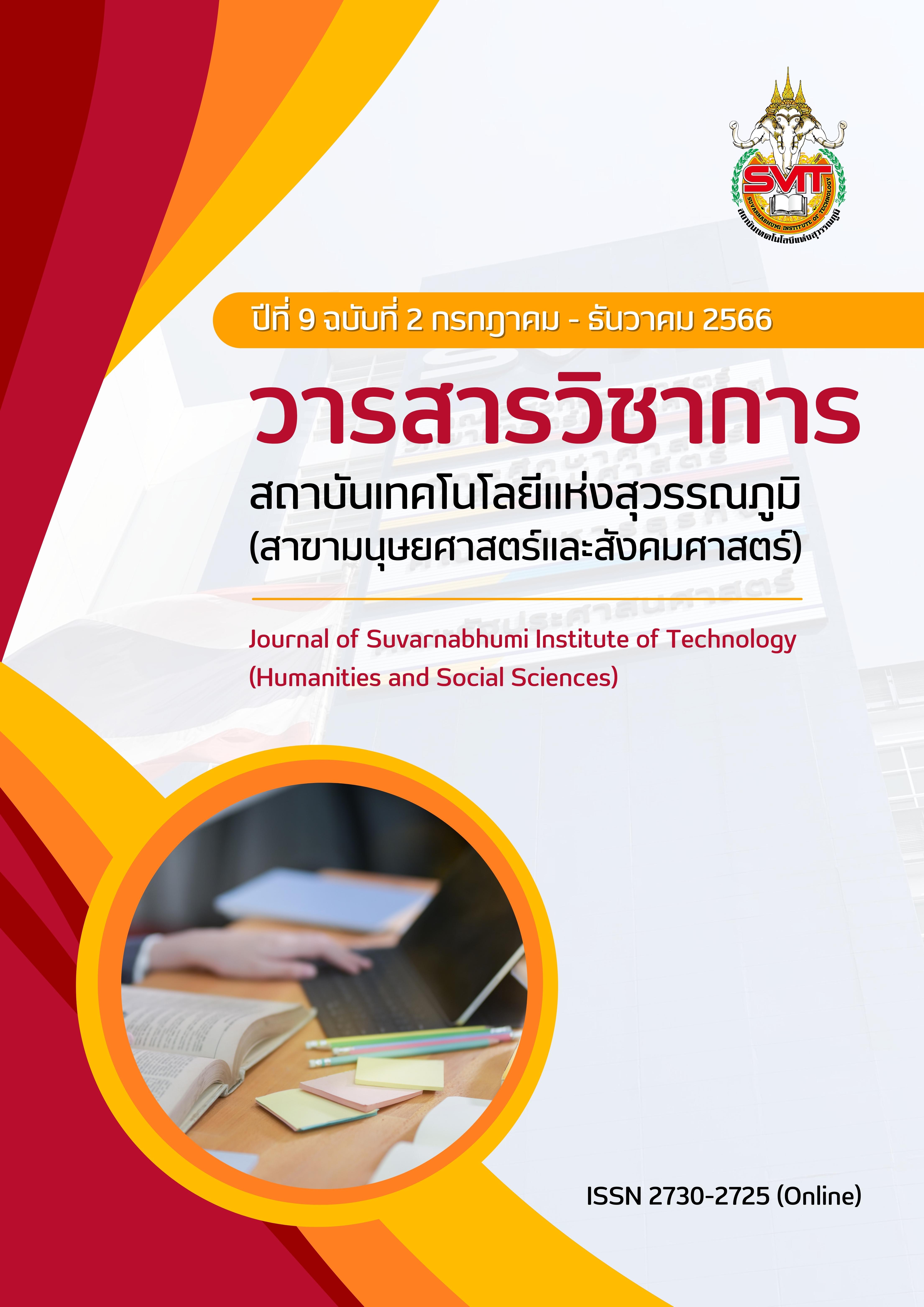INFLUENCING FACTORS OF SWITCHING INTENTION AND INTENTION TO USE PERSONAL CLOUD STORAGE SERVICES AMONG GRADUATES IN HANGZHOU, CHINA
Keywords:
Personal Cloud Storage Service, Switching Intention, Intention to Use, Graduates, ChinaAbstract
In China, cloud service leaders such as Alibaba and Tencent provide enterprise-level cloud storage services. At the same time, only a small number of suppliers concentrate on personal cloud storage services (PCSS), and China's most popular PCSS is Baidu Cloud. Therefore, this study investigates the factors influencing switching intentions and intention to use personal cloud storage services, including perceived ease of use, perceived usefulness, perceived risk, attitude, switching cost, intention to use, and switching intention. The data were collected from 517 graduate students using judgmental, stratified random, convenience, and snowball sampling. The item-objective congruence (IOC) and Cronbach's Alpha of the pilot test were approved before the data collection. Afterward, this study applied confirmatory factor analysis (CFA) and structural equation modeling (SEM). The results show that perceived ease of use significantly impacts perceived usefulness. Perceived usefulness, perceived ease of use, and attitude significantly affect intention to use. The perceived risk significantly affected the switching intention. Finally, switching cost and perceived usefulness significantly affect the switching intention.
References
Aldiabat, K., Rashid, A. S. K., Talafha, H., & Karajeh, A. (2018). The extent of smartphones users to adopt the use of cloud storage. Journal of Computer Science, 14(12), 1588-1598.
Alharbi, Y., Rabbi, F., & Alqahtani, R. (2020). Understanding university student's intention to use quality cloud storage services. International Journal for Quality Research, 14(1), 313-324.
Arpaci, I. (2016). Understanding and predicting students' intention to use mobile cloud storage services. Computers in Human Behavior, 58, 150-157. https://doi.org/10.1016/j.chb.2015.12.067
Awang, Z. (2012). Structural equation modeling using AMOS graphic. Penerbit Universiti Teknologi MARA
Bentler, P. M. (1990). Comparative fit indexes in structural models. Psychological Bulletin, 107(2), 238–246. https://doi.org/10.1037/0033-2909.107.2.238
Cheng, S., Lee, S.-J., & Choi, B. (2019). An empirical investigation of users' voluntary switching intention for mobile personal cloud storage services based on the push-pull-mooring framework. Computers in Human Behavior, 92, 198-215. https://doi.org/10.1016/j.chb.2018.10.035
Fornell, C., & Larcker, D. F. (1981). Evaluating Structural Equation Models with Unobservable Variables and Measurement Error. Journal of Marketing Research, 18(1), 39-50.
Hair, J., Black, W., Babin, B., Anderson, R., & Tatham, R. (2006). Multivariate Data Analysis (6th ed.). Harlow, England: Pearson Education.
Hsieh, J. K., Hsieh, Y. C., Chiu, H. C., & Feng, Y. C. (2012). Post-adoption switching behavior for online service substitutes: A perspective of the push–pull–mooring framework. Computers in Human Behavior, 28(5), 1912–1920.
Joo, J., & Sang, Y. (2013). Exploring Koreans' smartphone usage: an integrated model of the technology acceptance model and uses and gratifications theory. Computers in Human Behavior, 29, 2512–2518.
Kotler, P. (2000). Marketing Management. McGraw Hill.
Lei, P.-W., & Wu, Q. (2007). Introduction to structural equation modeling: Issues and practical considerations. Educational Measurement: Issues and Practice, 26(3), 33–43. https://doi.org/10.1111/j.1745-3992.2007.00099.x
Mathieson, K., & Keil, M. (1998). Beyond the interface: Ease of use and task / technology fit. Information & Management, 34(4), 221-230.
Ogbanufe, O., Dinulescu, C. C., Liu, X., & Kucuk, C. Y. (2019). It's in the cloud: Theorizing context specific factors influencing the perception of mobile cloud storage. The DATA BASE for Advances in Information Systems, 50(3), 116-137.
Park, E., & Kim, K. J. (2014). An integrated adoption model of mobile cloud services: Exploration of key determinants and extension of technology acceptance model. Telematics and Informatics, 31(3), 376–385.
Pedroso, R., Zanetello, L., Guimaraes, L., Pettenon, M., Goncalves, V., Scherer, J., Kessler, F., & Pechansky, F. (2016). Confirmatory factor analysis (CFA) of the crack use relapse scale (CURS). Archives of Clinical Psychiatry, 43(3), 37-40.
Ping, R. A. (1994). Does satisfaction moderate the association between alternative attractiveness and exit intention in a marketing channel? Journal of the Academy of Marketing Science, 22, 364-371.
Sharma, G. P., Verma, R. C., & Pathare, P. (2005). Mathematical modeling of infrared radiation thin layer drying of onion slices. Journal of Food Engineering, 71(3), 282–286.
Shen, Y. (2020). Baidu net disk overseas edition. Computer and Network, 32-33.
Sica, C., & Ghisi, M. (2007). The Italian versions of the Beck Anxiety Inventory and the Beck Depression Inventory-II: Psychometric properties and discriminant power. In M.A. Lange (Ed.), Leading - Edge Psychological Tests and Testing Research (pp. 27-50). Nova.
Soper, D. S. (2022, May 24). A-priori Sample Size Calculator for Structural Equation Models. Danielsoper. www.danielsoper.com/statcalc/default.aspx
Studenmund, A. H. (1992). Using Econometrics: A Practical Guide. Harper Collins.
Takabi, H., Joshi, J. B. D., & Ahn, G. J. (2010). Security and privacy challenges in cloud computing environments. IEEE Security and Privacy Magazine, 8(6), 24–31.
Wang, J. (2017). Critical Factors for Personal Cloud Storage Adoption in China. Journal of Data and Information Science, 1(2), 60-74. https://doi.org/10.20309/jdis.201614
Wang, W., & Yang, H. (2017). An empirical study of influential factors of personal cloud storage using intention. Journal of Information Resources Management, 4, 86-96.
Wu, J.-H., & Wang, Y.-M. (2006). Measuring KMS success: A respecification of the DeLone and McLean's model. Information & Management, 43(6), 728-739. https://doi.org/10.1016/j.im.2006.05.002
Wu, K., Vassileva, J., & Zhao, Y. (2017). Understanding users' intention to switch personal cloud storage services: Evidence from the Chinese market. Computers in Human Behavior, 68, 300-314. https://doi.org/10.1016/j.chb.2016.11.039
Xu, F., Tian, M., Xu, G., Reyes Ayala, B., & Shen, W. (2017). Understanding Chinese users' switching behaviour of cloud storage services. The Electronic Library, 35(2), 214-232. https://doi.org/10.1108/el-04-2016-0080
Zhang, G., & Ravishankar, M. N. (2019). Exploring vendor capabilities in the cloud environment: A case study of Alibaba Cloud Computing. Information and Management, 56(3), 343-355 https://doi.org/10.1016/j.im.2018.07.008
Downloads
Published
Issue
Section
License
Copyright (c) 2023 Suvarnabhumi Institute of Technology

This work is licensed under a Creative Commons Attribution-NonCommercial-NoDerivatives 4.0 International License.
บทความที่ได้รับการตีพิมพ์เป็นลิขสิทธิ์ของวารสารวิชาการ สถาบันเทคโนโลยีแห่งสุวรรณภูมิ
ข้อความที่ปรากฏในบทความแต่ละเรื่องในวารสารวิชาการเล่มนี้เป็นความคิดเห็นส่วนตัวของผู้เขียนแต่ละท่านไม่เกี่ยวข้องกับสถาบันเทคโนโลยีแห่งสุวรรณภูมิ และคณาจารย์ท่านอื่นๆในสถาบันฯ แต่อย่างใด ความรับผิดชอบองค์ประกอบทั้งหมดของบทความแต่ละเรื่องเป็นของผู้เขียนแต่ละท่าน หากมีความผิดพลาดใดๆ ผู้เขียนแต่ละท่านจะรับผิดชอบบทความของตนเองแต่ผู้เดียว





